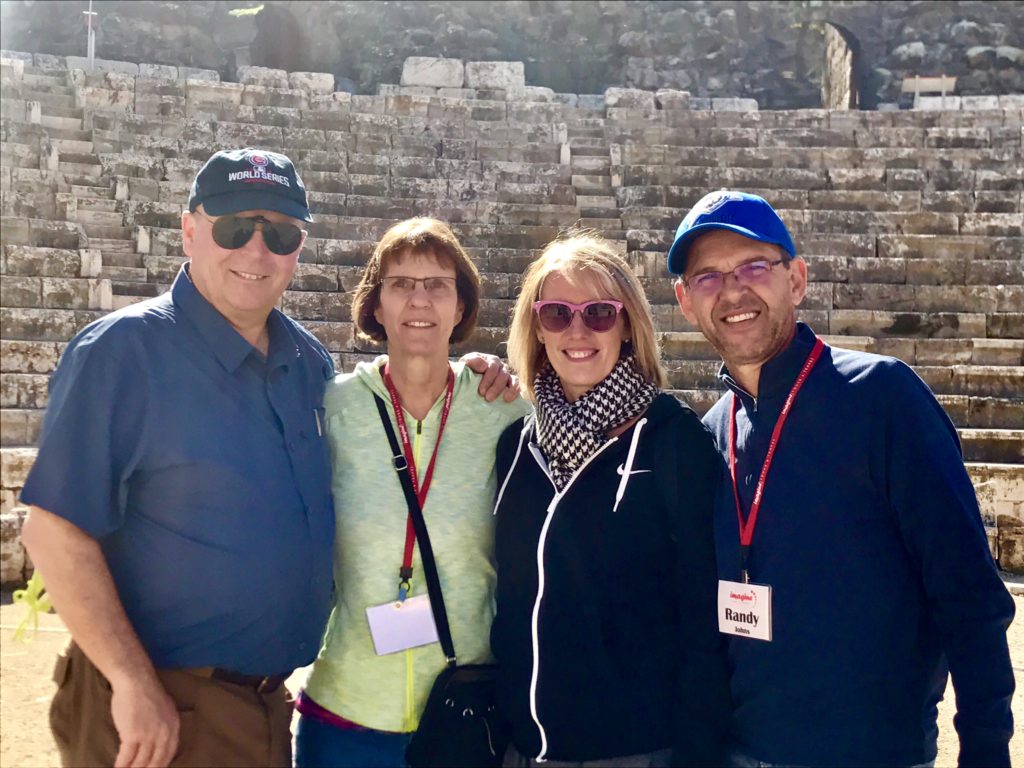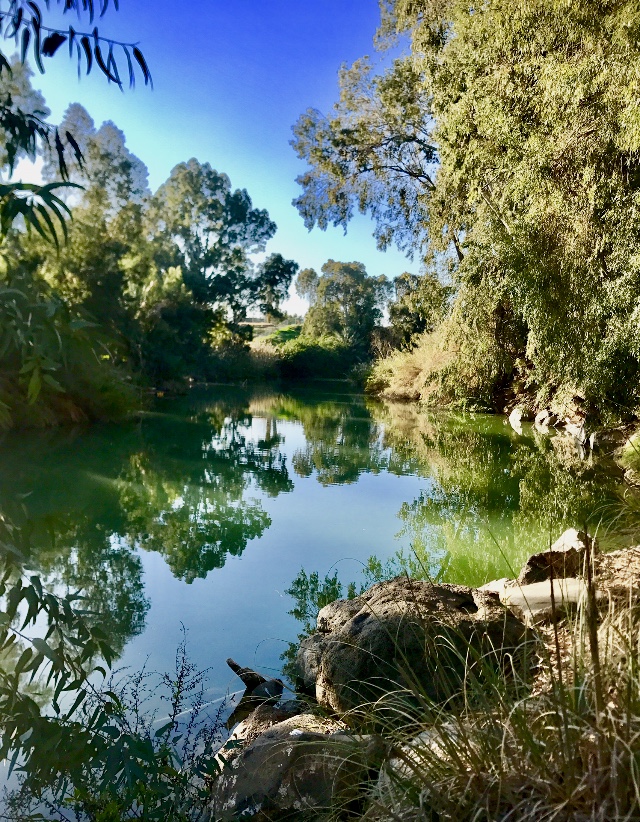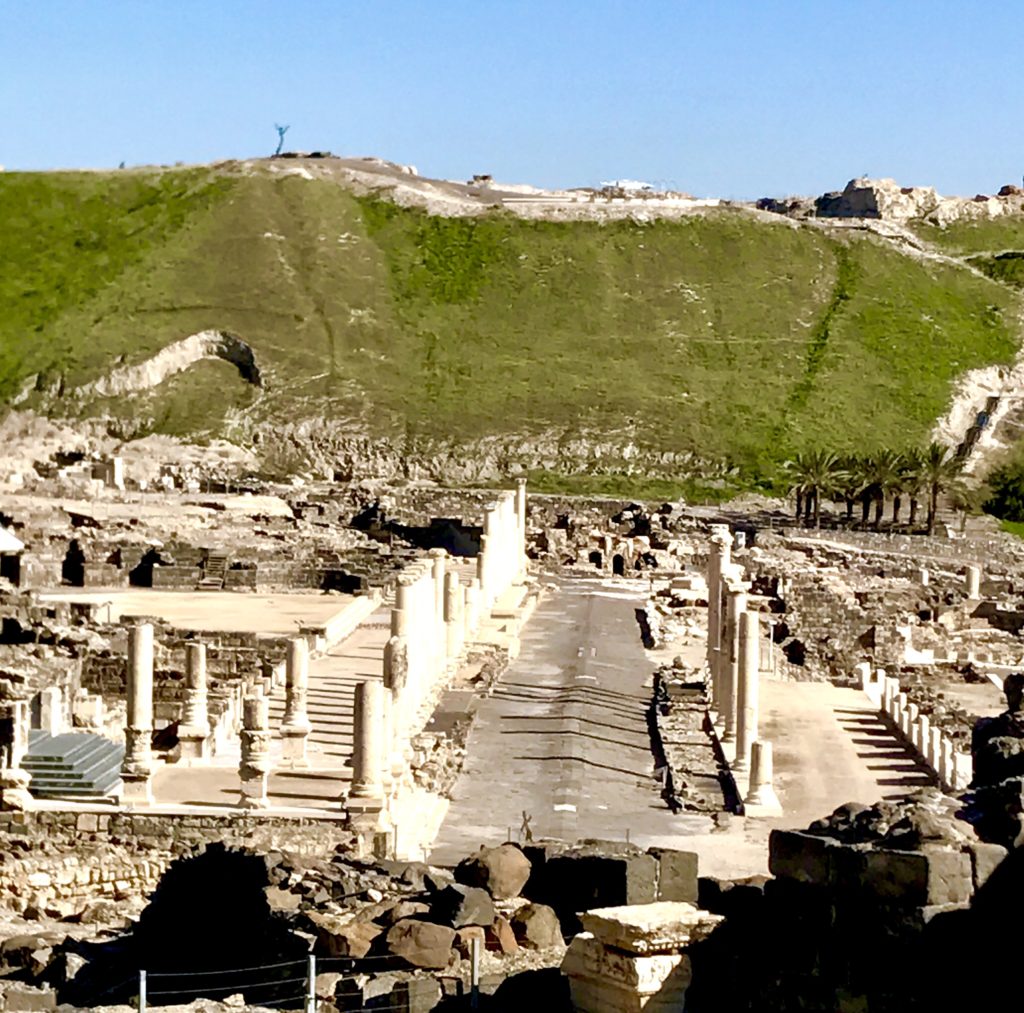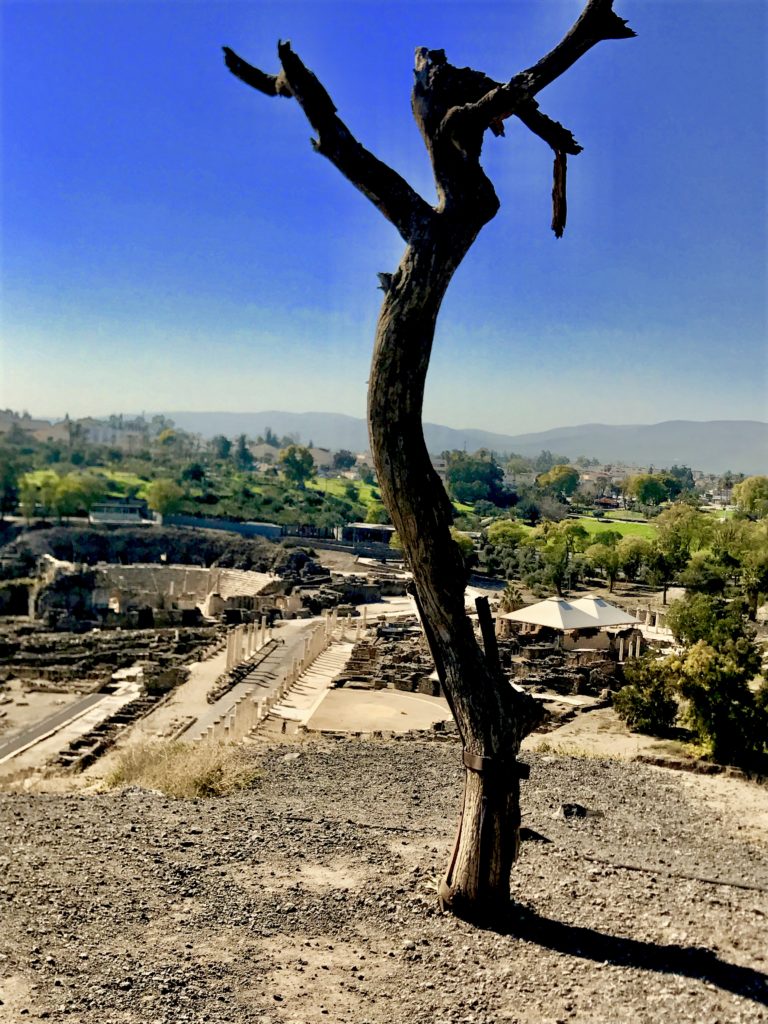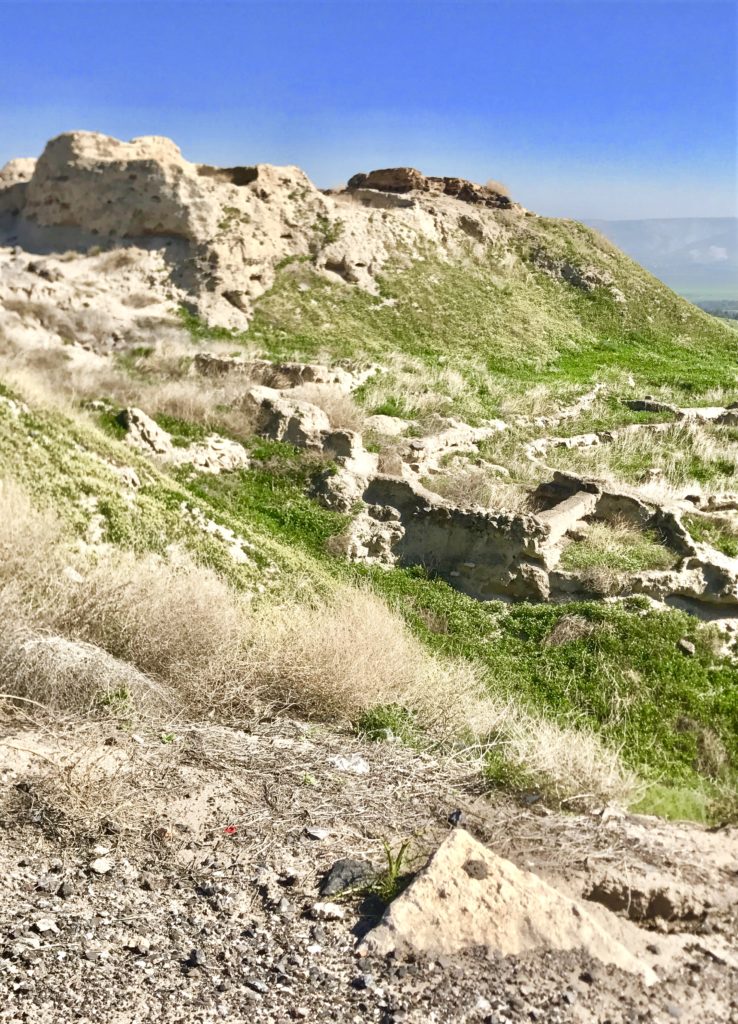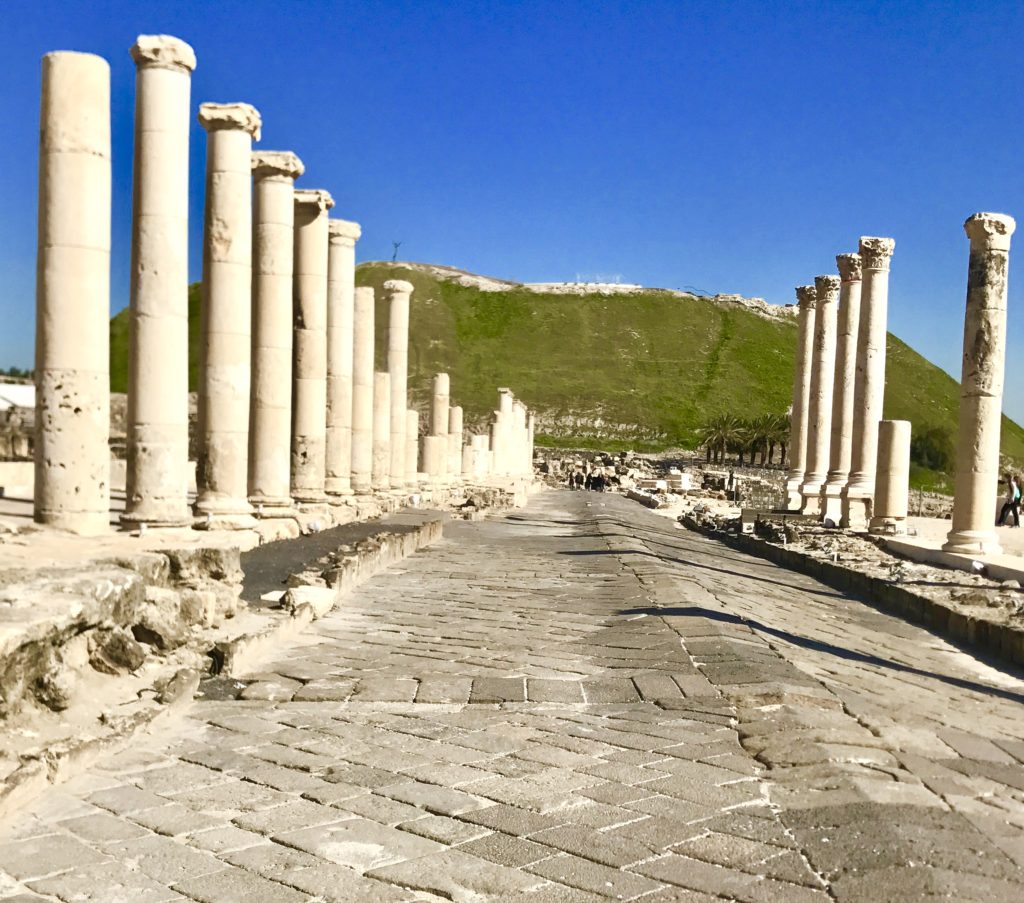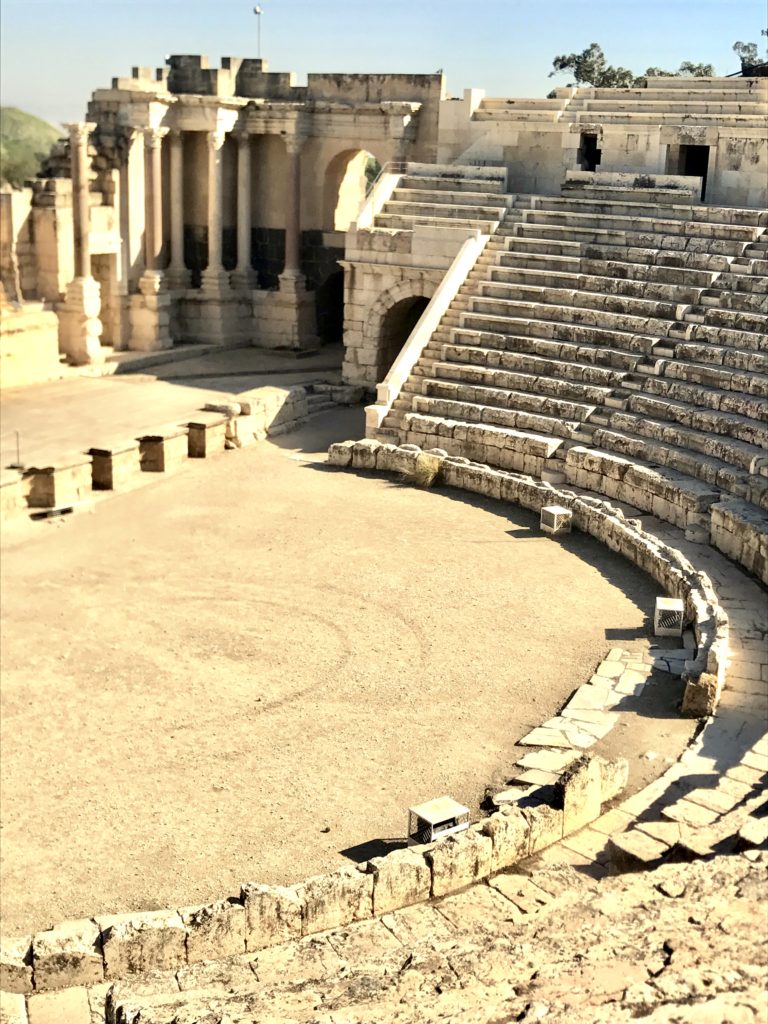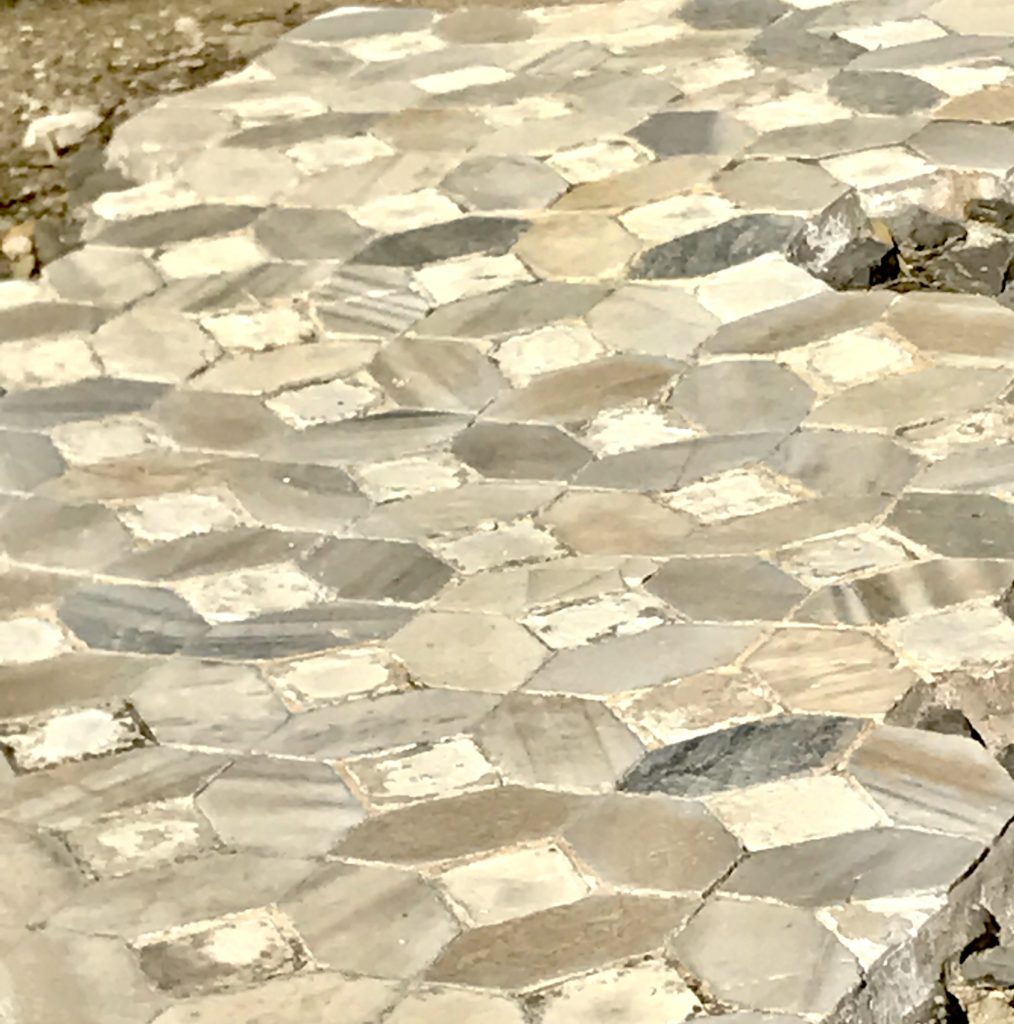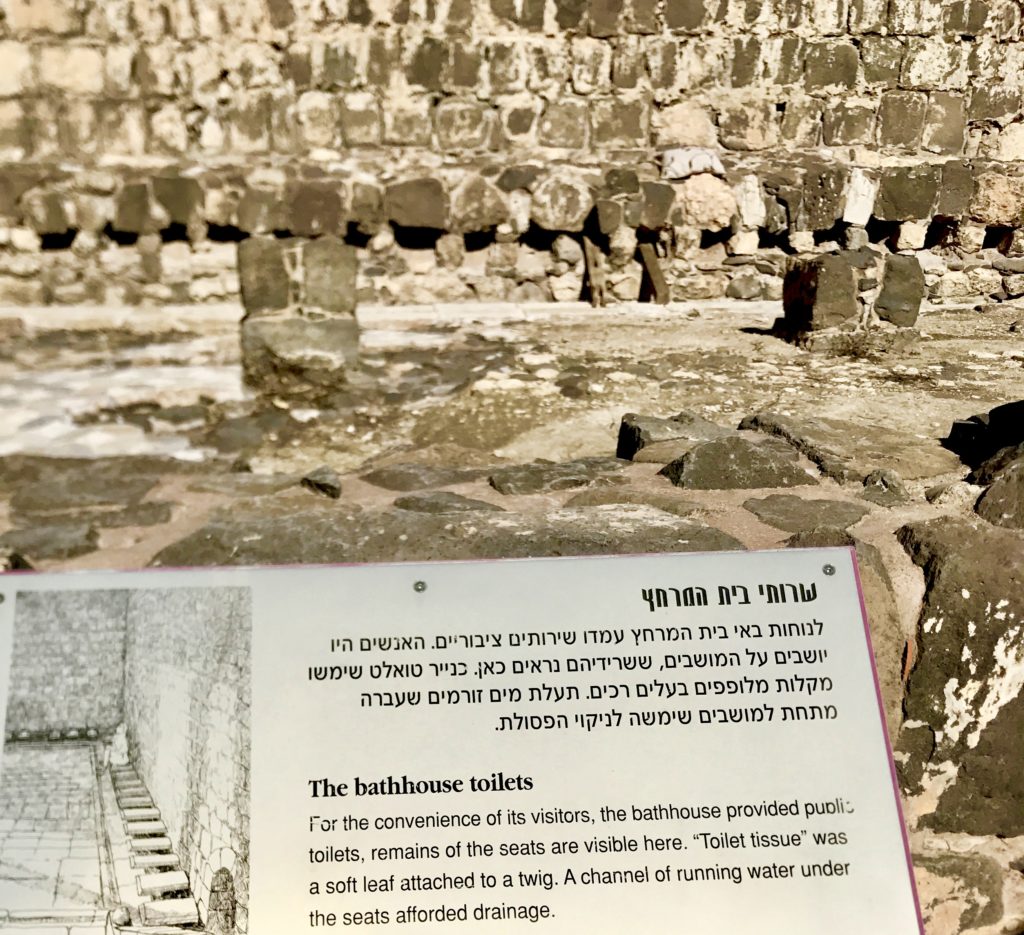I am not a follower.
Never have been, never will be.
Confession number one:
My younger leanings were a bit to the rule-breaking, not the rule-keeping side of the spectrum.
Confession number two:
I never acquired the patience for rules for rules sake,
Or control wars or other such nonsense.
First century result? Like a tiny rock in your shoe, I’d have been shunned as a constant agitation to the Pharisees.
So of course I wandered away from our group, bff Janice in tow, and beelined it to the water. Barely a ripple, the glass-like surface of the Jordan River colored wide like a watery jewel in the blue-green hues of jade. The beauty and holy significance pierced me as I soaked it deep.
Deciding it was too cold for this southern girl to immerse her feet, I wimped and dipped my hand in. I had to at least touch the waters where crowds flocked curious, wild John the Baptist preached and my Lord was baptized as God thundered proud (Matt 3:5-17).
I tried to find a hushed corner to reflect and write in solitude, but that lasted about three seconds. Boisterous tourists descended on me like a teeming gaggle of geese. Chatter spewing careless over me, a lady and her daughters plopped down a foot away, though there were many empty places to sit in the small amphitheater.
I gave up.
Next stop, a few miles from the Jordan, lay the ruins of Beit She’an. Glaring down on the once prosperous city, loomed a 300’ Tel—tallest in all Israel. Secrets yet to be uncovered remain in twenty different cities built and then destroyed, one on on top of the other and slowly buried through the ages under the artificial mount or “Tel”.
An ancient city dating back to 5000 BC, it’s inhabitants were not driven out in the invasion of Canaan. “Neither did Manassah drive out the inhabitants of Bethshean and her towns” (Judges 1:27). It was captured by the blood-thirsty Philistines around 1100 BC.
We hiked breathless up steep stairs to enter the ruins of city walls and ancient fortresses on the Tel. Four miles away in the bloody battle raged at Mount Gilboa, all three of King Saul’s sons perished and rather than be being captured, a wounded Saul committed suicide.
The barbaric Philistines flaunted brash their victory by displaying the bodies of Saul and his sons on the city walls at Beit She’an (1 Samuel 31:10).
Maybe because of their horrifying treatment of his beloved friend Jonathan and once mentor Saul, David overthrew Beit She’an and burned the evil place to the ground.
I felt a chill run down my spine as I spied an eerie tree trunk staked bold at the pinnacle of the Tel. Reaching heavenward, surrounded by ruin, it splayed chilling and twisted, as if arms spread in a specter of torture and death. It was an effigy of Saul as he hung dead on the wall.
Solomon later rebuilt the city and made it an important government center. “And Solomon had twelve officers over all Israel…(including) Bethshean” (1 Kings 4:7-12). It was destroyed yet again by the Egyptians five years after Solomon’s death.
Hopscotch to the first century and Beit She’an reigned as a prosperous Roman city. The richly ornamented Cardo (main street) lined impressive with columns in typical Roman fashion.
And with an opulent stage and seating for 7000, the best preserved theater in Israel remains a sight to see.
Nestled in a strategic location, it was the hub of travel as the junction from the Jordan River Valley to the Jezreel Valley. Jesus would likely have passed through this Cardo, the main thoroughfare on his travels from Galilee to Jerusalem. It was the capital of the Decapolis (ten cities) in Jesus time (Matthew 4:24, Mark 5:18, 7:31).
A “modern” city, it was lined with huge bathhouses that included toilets for forty. The stone perches were queued up one after another with a stream of running water underneath to wash away you know what… Privacy was a non-issue and nudity seemed to be no big deal. They were both places to convene with friends or discuss business deals, naked or not… The potties had no partitions so you just sat a few inches from your neighbor and chatted about—the weather??
But there was a dark tragedy to befall the Jews in this Roman city. During the destruction of Jerusalem and it’s sympathizers, they followed faulty advice by Jewish leaders. Buckling fearful, they wanted no part in the revolt. Followers of the worst kind, they turned their backs traitorous on their brother Jews. Believing their Roman neighbors to be trustworthy, their pacifism backfired when the Romans decided they were a threat and brutally murdered them all.
Ironically it was nature, not man that toppled the city with a massive earthquake in 749AD.
I should amend the “never will be a follower” statement in my beginning paragraph. Unlike the Jews in Beit She’an, there are some good kinds of following.
Once I fell in love with my Savior, which did not happen until I was in my thirties,
And embraced his word,
The priceless jewels flowed from the page and into my life like the Jordan.
Cleansing and scrubbing me raw, God allowed it to work in me just as he did centuries ago to the followers who plunged in the Jordan to be washed clean.
And I fell hard like Beit’ Shean.
But unlike the doomed city,
I fell into his arms.
Ever grateful for his forgiveness,
And became a follower for life.
“The LORD is my rock, my fortress and my deliverer…my refuge…my shield…my salvation.” (Psalm 18:2)


